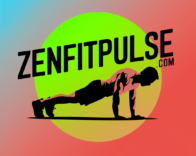Welcome to the world of neuro fitness training, where exercise meets brain health. At zenfitpulse.com, we make fitness accessible and effective for all. By mixing physical exercise with brain challenges, you boost your brain power and health.
We’ll dive into neuro fitness and its perks. You’ll learn how to add brain-body connection exercises to your day. By joining zenfitpulse.com, you’ll get lots of tips on fitness and brain health to reach your goals.
Key Takeaways
- Understand the concept of neuro fitness and its benefits
- Learn how to combine physical exercise with cognitive challenges
- Discover simple exercises to boost brain power
- Incorporate brain-body connection exercises into your daily routine
- Stay updated with the latest fitness and brain health information
Introduction to Neuro-Fitness Training

Neuro-fitness mixes exercise with brain games. It’s a way to keep your body and mind healthy. At zenfitpulse.com, we help you learn about this new method.
What is Neuro-Fitness?
Neuro-fitness is a workout that challenges your brain and body. It’s a cognitive fitness workout that boosts your brain health. You’ll get better at moving and thinking.
- Enhances cognitive function
- Improves coordination and balance
- Supports overall brain health
Benefits of Neuro-Fitness Training
Neuro-fitness has many benefits. It’s a great mental health training program. Here are some key advantages:
- Reduces cognitive decline risk
- Improves mental clarity and focus
- Boosts physical fitness
Adding neuro-fitness to your routine can greatly benefit you. It’s a way to care for your mind and body.
How It Combines Mind and Body
Neuro-fitness combines exercise with brain games. It’s a workout that works your mind and body together. This way, you improve your fitness and mental health at the same time.
For more on neuro-fitness, check out zenfitpulse.com. We aim to make fitness easy for everyone. We’re here to help you reach your health goals.
The Science Behind Brain-Boosting Exercises

To get the most from neuro-fitness, knowing the science is key. It works because of neuroplasticity, the brain’s power to change. This lets our brains grow and adapt as we live.
Neuroplasticity and Its Importance
Neuroplasticity means the brain can make new connections. It’s key for learning and memory. It also helps us heal from brain injuries. Neuroplasticity exercises boost this ability, making our brains better.
Doing brain challenges, like brain training techniques, helps too. These tasks improve coordination, memory, and solving problems. For more on neuro-fitness, check out zenfitpulse.com.
How Exercise Affects Brain Health
Exercise is great for the brain. It makes blood flow better, helping new neurons grow. This boosts thinking skills and makes us feel better.
Working out regularly makes memory, attention, and speed better. It also lowers the chance of brain diseases. Knowing how exercise helps the brain can make your workouts better.
For more on neuro-fitness science and how to use it, zenfitpulse.com is a good place to start.
Key Components of Neuro-Fitness Training

To unlock the full power of neuro-fitness, knowing its core parts is key. These parts work together to boost both physical and mental health. Good neuro-fitness training mixes different exercises and methods to challenge your brain and body at the same time.
Coordination and Balance Exercises
Coordination and balance exercises are key for better neuro-fitness. They help your brain talk better to your muscles, leading to better physical skills. Try single-leg squats, balance boards, and agility ladder drills.
Adding these to your routine improves your physical balance and boosts your brain power.
Cognitive Challenges During Workouts
Cognitive challenges are also important in neuro-fitness training. They make you use your brain while working out. Try dual-task training, where you do a physical task and solve a mental puzzle at the same time.
This can make your brain more flexible and strong.
Mindfulness and Breathing Techniques
Mindfulness and breathing techniques are key for staying focused during workouts. Practices like meditation and deep breathing lower stress, improve focus, and clear your mind. Adding these to your workout routine makes your exercises more balanced and effective.
By knowing and using these key parts, you can make a complete neuro-fitness program. It will not only make you healthier physically but also improve your brain. For more tips and workout ideas, check out zenfitpulse.com.
Popular Neuro-Fitness Exercises

Let’s look at the top neuro-fitness exercises changing fitness and brain training. Neuro-fitness mixes physical workouts with brain challenges. It’s a full fitness plan.
The Power of Dual-Task Training
Dual-task training is a strong method. It’s doing two things at once, which tests your brain and boosts thinking skills. Try walking and solving math or playing memory games.
Examples of Neuro-Fitness Workouts
Here are some neuro-fitness workouts:
- Balance exercises with memory recall
- Cognitive games in strength training
- Coordination drills that need problem-solving
These workouts challenge your body and mind. They make your fitness routine fun and effective.
Incorporating Brain Games into Fitness
Adding brain games to your workouts makes them more fun and tough. Use apps or games that need thinking, like puzzles or strategy games, while exercising. For more neuro-fitness exercises and workouts, visit zenfitpulse.com.
By mixing physical exercise with brain challenges, you get a complete fitness plan. Neuro-fitness training boosts brain power while you work out. It’s great for improving your fitness overall.
Designing Your Neuro-Fitness Regimen

To get the most out of neuro-fitness training, it’s key to design a regimen that fits your needs. A well-structured program helps you reach your cognitive and physical goals better.
Tailoring to Different Fitness Levels
Whether you’re a beginner or an advanced athlete, your neuro-fitness regimen should match your fitness level. Beginners should start with simple exercises that challenge coordination and cognitive functions. As you get better, you can make the exercises harder.
- For beginners: Focus on basic balance exercises and simple cognitive tasks.
- For intermediate: Incorporate more complex coordination exercises and dual-task training.
- For advanced: Engage in high-intensity workouts that combine physical challenges with complex cognitive tasks.
Creating Balanced Workouts
A balanced neuro-fitness workout should mix physical exercises, cognitive challenges, and mindfulness techniques. This mix is key for brain health and physical fitness.
Cognitive Fitness Workouts include puzzles, memory games, and problem-solving exercises. Mental health training programs often use mindfulness and stress reduction techniques.
Scheduling and Consistency Tips
Consistency is key to seeing results from your neuro-fitness regimen. It’s best to schedule your workouts at the same time each day to make it a habit.
- Start with short sessions (20-30 minutes) and gradually increase the duration as you become more comfortable.
- Mix up your routine to avoid boredom and prevent plateaus.
- Track your progress and adjust your regimen as needed.
For personalized guidance on designing your neuro-fitness regimen, consider subscribing to resources like zenfitpulse.com. It offers expert advice and tailored programs to help you achieve your fitness and cognitive goals.
Equipment and Tools for Neuro-Fitness
Neuro-fitness training gets better with special equipment and tech. Bodyweight exercises are good, but certain gear can make your workouts better.
Essential Gear for Effective Training
Here are some key tools for neuro-fitness:
- Balance Boards: Improve balance and coordination.
- Resistance Bands: Enhance strength and flexibility.
- Agility Ladder: Boost agility and footwork.
- Bosu Ball: Engage core muscles and improve stability.
These tools help challenge your brain and body. For instance, using a balance board with cognitive tasks boosts neuroplasticity.
Technology Aids: Apps and Gadgets
Technology is key in modern neuro-fitness. Apps and gadgets track progress, offer brain challenges, and keep you motivated.
| Technology | Description | Benefits |
|---|---|---|
| Brain Training Apps | Apps like Lumosity and Peak offer cognitive training exercises. | Improve memory, attention, and problem-solving skills. |
| Fitness Trackers | Devices like Fitbit track physical activity and health metrics. | Monitor progress, set goals, and stay motivated. |
| Virtual Reality (VR) Headsets | VR headsets provide immersive environments for training. | Enhance cognitive and physical training with interactive experiences. |
For the latest on neuro-fitness gear, visit zenfitpulse.com. Keeping up with new tech and tools can improve your neuro-fitness journey.
Neuro-Fitness for Different Age Groups

Neuro-fitness fits everyone, from kids to seniors. It meets each group’s special needs and benefits. By making cognitive enhancement workouts and neural fitness routines for each age, we get the best results.
Kids: Fun and Engaging Activities
For kids, neuro-fitness is all about fun and learning. It mixes physical play with brain games. This combo boosts their brain and body skills.
At zenfitpulse.com, we have fun neural fitness routines for kids. Parents can easily add them to their day.
Adults: Staving Off Cognitive Decline
Adults can keep their brains sharp with neuro-fitness. It helps with memory, focus, and solving problems. Our team at zenfitpulse.com helps you create workouts that challenge your brain.
Seniors: Enhancing Stability and Function
Seniors need neuro-fitness for better balance and function. Simple exercises like balance games and memory tests are great. Visit zenfitpulse.com for neural fitness routines made for seniors.
Neuro-fitness meets the needs of all ages. It boosts brain health and well-being. Whether you’re a kid, adult, or senior, adding cognitive enhancement workouts to your life can change things for the better.
Common Misconceptions About Neuro-Fitness

Neuro-fitness is getting more popular, but many people don’t know much about it. At zenfitpulse.com, we aim to clear up these misunderstandings. We want to share the real facts about neuro-fitness training.
Clarifying Myths Versus Facts
Some think neuro-fitness is only for those with brain problems. But, neuro-fitness training helps anyone boost their brain health. It uses brain training techniques to improve memory and focus.
Another myth is that you need fancy and expensive gear for neuro-fitness. But, many exercises can be done without any special equipment. This makes it easy for everyone to try, no matter their budget or gym access.
Why Neuro-Fitness Is for Everyone
Neuro-fitness isn’t just for a few; it’s for anyone wanting better mental and physical health. It’s great for young athletes or seniors wanting to keep their minds sharp. Neuro-fitness training can be customized for you.
- It improves cognitive function and brain health.
- It enhances physical coordination and balance.
- It can be adapted to different fitness levels and ages.
Learning the truth about neuro-fitness helps you make smart choices. Visit zenfitpulse.com to discover how to start your neuro-fitness journey today.
Staying Motivated with Neuro-Fitness
Keeping motivated is key to success in neuro-fitness. Adding cognitive and neural fitness to your routine is important. It’s vital to track your progress and celebrate your wins.
Progress Tracking
Watching your progress keeps you focused on your goals. Regularly checking your performance helps you see what to improve. This keeps you motivated and interested in your workouts.
Community Support
Being part of a community gives you the support and motivation you need. On zenfitpulse.com, you can meet others who love neuro-fitness. You can share your journey and learn from theirs. Being in a supportive group helps you stay on track and reach your goals.
Tracking your progress and having community support are great ways to succeed in neuro-fitness. Join us on zenfitpulse.com to stay motivated and inspired on your journey.
FAQ
What is neuro-fitness, and how does it differ from traditional fitness training?
What are the benefits of incorporating neuro-fitness into my workout routine?
Do I need any special equipment for neuro-fitness training?
Can neuro-fitness be beneficial for individuals of all ages?
How often should I practice neuro-fitness exercises to see results?
Can I incorporate neuro-fitness into my existing workout routine?
Are there any specific neuro-fitness exercises suitable for beginners?
How can I track my progress with neuro-fitness training?
Discover more from zenfitpulse
Subscribe to get the latest posts sent to your email.

